Column
2025.10.10
Top 10 Most Popular Japanese Tattoo Designs Among Foreigners: Dragon, Sakura, Mount Fuji, Samurai & More
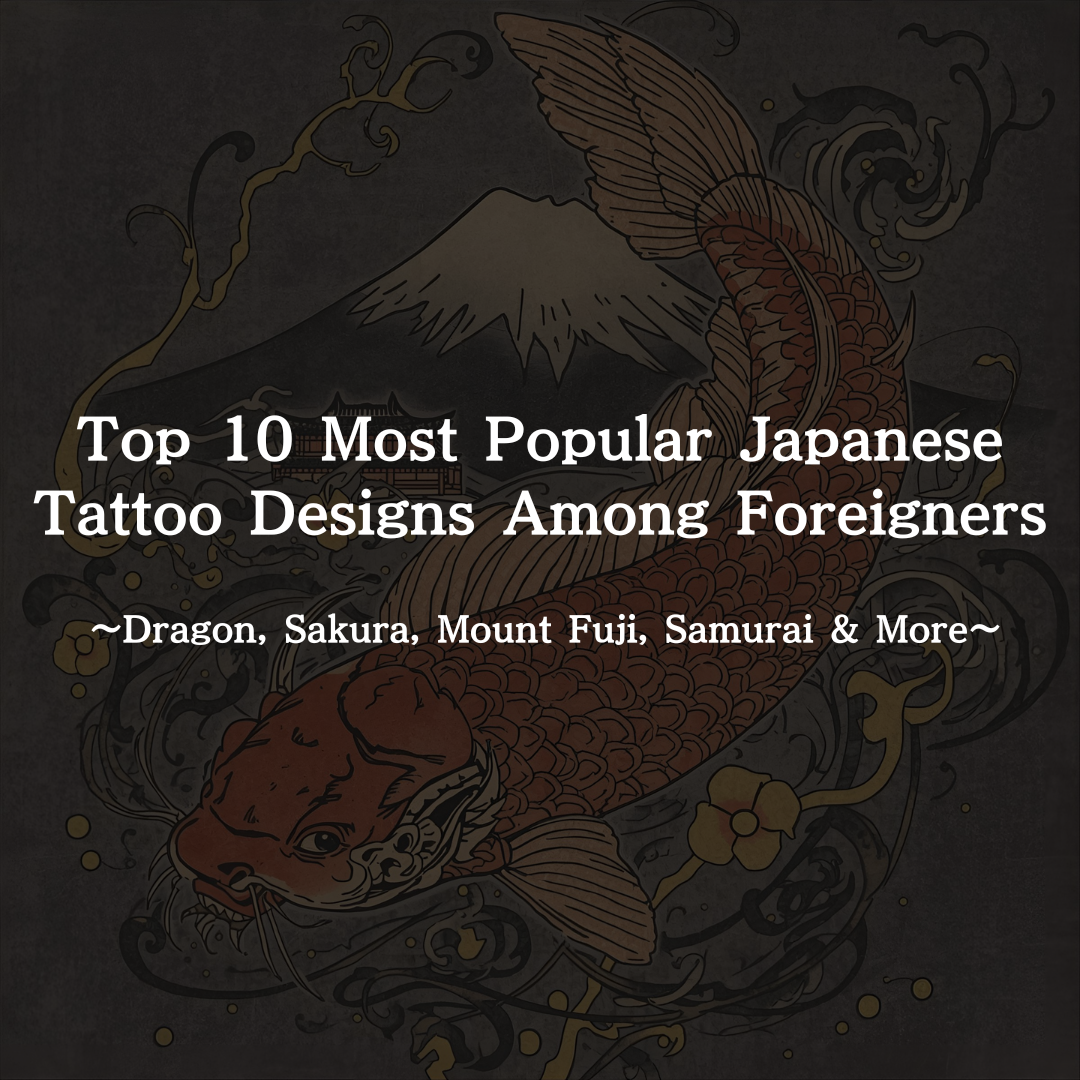
More and more foreign travelers visiting Japan say things like
I love Japan and want to carry its culture on my skin.
- I love Japan and want to carry its culture on my skin.
- I want to take home a memory of my trip that lasts forever.
The solemn atmosphere of temples and shrines stands alongside the street culture of Shibuya and Harajuku.
As a result, the Japanese tattoo has become globally recognized as an art form that embodies both worlds.
This article introduces the Top 10 Japanese motif tattoo designs most popular among foreign visitors, explaining their meanings, symbolism, and design examples.
We also feature English-speaking tattoo artists in Tokyo who can help you get your dream tattoo during your visit.
If you’re thinking about getting a tattoo while traveling in Japan, read on.
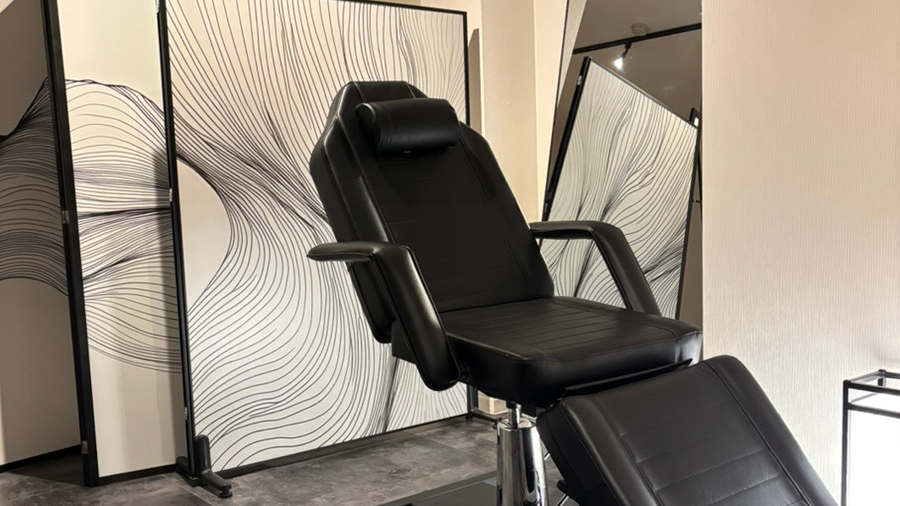
If you’re looking for a recommended tattoo studio in Japan that offers English services, please visit Tattoo Studio KAGEROU.
- All genres supported
- Home to top-level artists
- Custom design proposals available
- Japan’s most stylish interior with strict hygiene management
- Excellent access with 3 locations in Tokyo and 1 in Yokohama
Official Website
Reservations are also available via Instagram.
Top 10 Japanese Tattoo Motifs Loved by Foreigners
1. Dragon
この投稿をInstagramで見る
In Japan and East Asia, the dragon has long been revered as a sacred being—a symbol of protection and power, ruling over water, clouds, and the heavens.
Meaning and Symbolism
Represents the spirit of overcoming challenges and continuing to grow.
Many people choose it to symbolize their courage to keep evolving without fear of change.
Design Trends
- Full-back Japanese-style dragon
- Traditional compositions with waves or clouds
- Shading for a three-dimensional effect
- Flowing designs that wrap around arms and shoulders
Japanese dragons are distinct in their claw and horn shapes, often depicted soaring through the sky.
Combining elements like fire or lightning gives the design a more dynamic and mythical appearance.
Detailed shading on each scale creates lifelike depth, giving the illusion that the dragon is moving beneath the skin.
2. Sakura
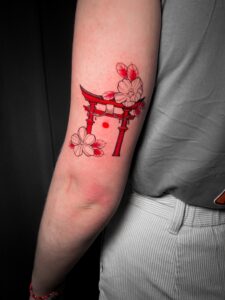
A symbol of Japan’s spring, the cherry blossom represents the beauty and fragility of life.
The falling petals carry meanings of transience, renewal, and hope.
Why It’s Popular
- Pink tones blend beautifully with the skin
- Works for both small one-point tattoos and large scenic pieces
- Especially popular among women, yet looks great on men too
Design Examples
- A single blossom on the wrist or ankle
- Landscapes with Mount Fuji or the moon
- Soft watercolor-style gradients
- Petals arranged as if drifting in the wind
The placement of petals or the angle of branches can greatly change the mood.
By depicting overlapping petals or a wind-blown flow, artists express the Japanese aesthetic of harmony between stillness and movement.
Its gentle colors and lines make it an ideal first tattoo choice.
3. Mount Fuji
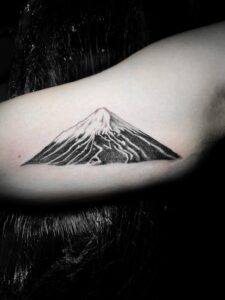
Registered as a UNESCO World Heritage Site, Mount Fuji is a national symbol of Japan.
Its perfect silhouette and serenity represent peace and spiritual strength.
Why It’s Popular
- A memorable icon of Japan travel
- Pairs well with sakura, waves, and the rising sun
- Simple yet powerful in impression
Design Examples
- Ukiyo-e style inspired by The Thirty-Six Views of Mount Fuji
- Minimalistic silhouettes
- Night scenes featuring stars or the moon
Mount Fuji embodies Japan’s spiritual core.
Popular variations include the red-hued “Aka-Fuji” at sunrise or the snow-covered “White Fuji.”
Adding clouds or waves enhances the grandeur of nature.
Even simple designs convey the quiet beauty that defines Japanese aesthetics.
4. Samurai
この投稿をInstagramで見る
The samurai represents Bushidō, Japan’s unique warrior code symbolizing honor, loyalty, courage, and discipline.
Why It’s Popular
- Familiar through anime and movies
- Symbolizes the spirit of the warrior; highly popular among men
Design Examples
- Side profile of a samurai in armor
- Combat pose with drawn katana
- Cherry blossoms swirling around the warrior
- Contrasts with dragons or tigers for extra power
Samurai tattoos reveal individuality through detailed expressions—
the face conveys determination or calmness, while armor and swords express strength.
Adding elements like fire or wind brings motion and emotion, turning the samurai into a symbol of spiritual pride, not just a warrior.
5. Koi Fish
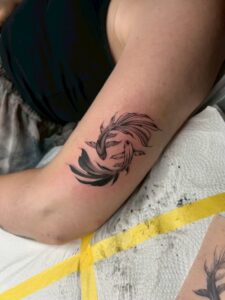
Originating from the Japanese legend “Tōryūmon,” where a koi that climbs a waterfall transforms into a dragon, this fish symbolizes effort, perseverance, and success.
Why It’s Popular
- Japanese-style compositions with waves and lotus flowers
- Paired with dragons (ascending koi)
- Monochrome black-and-gray versions for subtle elegance
Combining koi with flowing water creates vitality and movement.
Colors like red, blue, or gold express personal meanings.
An upward koi means challenge, while a downward one represents achievement.
Among Japanese motifs, koi fish are one of the most positive symbols.
6. Kanji
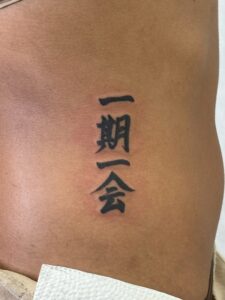
Japanese kanji characters are popular for their aesthetic form and deep meanings.
Each character conveys powerful messages in minimal space.
Why It’s Popular
- Expresses feelings in a single word
- Universally recognizable as “Japanese”
- Minimal yet strong—fits any style
Popular Kanji Words
- 愛 (Love)
- 夢 (Dream)
- 武 (Warrior)
- 心 (Heart or Spirit)
- 自由 (Freedom)
- 平和 (Peace)
- 強 (Strength)
Design Examples
- Vertical script along the back or arm
- English-Kanji mixed designs
- Brushstroke calligraphy styles
- Thin, minimalist linework
Each kanji becomes a “picture with meaning.”
The choice of font, brush pressure, and stroke flow changes its impression—
from bold calligraphy to Zen-inspired simplicity.
It’s one of the most recognizable ways to experience “Japaneseness” through tattoo art.
For more details, see our in-depth guide to Kanji Tattoos.
Complete Guide to Kanji Tattoos | Meaning, Design, and Top Tattoo Studios in Tokyo
7. Wave
この投稿をInstagramで見る
Famous through traditional Ukiyo-e art, waves symbolize nature’s power, the flow of life, and balance.
Design Examples
- Classic compositions with Mount Fuji
- Flowing patterns across the back or arm
- Ink gradients expressing water transparency
The wave’s curved lines naturally match the body’s shape.
Large waves represent energy and motion, while smaller ones express calm.
This design reflects the Japanese philosophy of wabi-sabi—beauty in impermanence—and is often interpreted abroad as a symbol of “Calm and Strength.”
8. Tiger
この投稿をInstagramで見る
The tiger stands for courage, strength, and protection.
It appears frequently in Japanese traditional art as a guardian against evil.
Design Examples
- Dynamic scenes with flames or clouds
- Full chest or back pieces
- Realistic black-and-gray muscle detail
The tiger embodies raw power.
Its gaze and fur flow can be depicted as calm and majestic or fierce and roaring.
While traditionally favored by men, minimalist and stylized versions are now popular among women for a modern, cool look.
9. Crane

In Japan, cranes symbolize longevity, peace, and happiness, said to live for a thousand years.
Their graceful form appeals to all genders.
Design Examples
- Origami crane silhouette
- Combined with sakura or the moon
- Soft watercolor expression
Cranes with spread wings exude elegance and motion.
Two cranes together symbolize love and connection—making them popular as couple tattoos.
Using pale tones or gold ink gives the piece a luxurious, artful finish.
10. Noh & Kitsune Masks
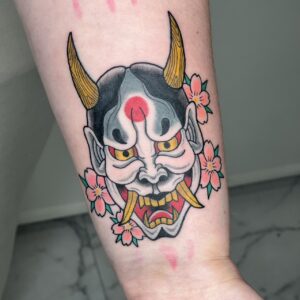
These mysterious masks represent traditional Japanese performing arts.
The fox mask, in particular, blends easily with modern tattoo styles.
Design Examples
- White fox mask with red markings
- Combined with sakura or flames for fantasy mood
- Minimalist monochrome versions
Fox masks evoke both mystery and playfulness.
Realistic versions have strong presence, while simplified designs feel cute and anime-like.
Pairing with Noh masks creates a fusion of tradition and modern art—a style adored worldwide.
Recommended Artists in Tokyo
Ruby (Tattoo Studio KAGEROU Nihonbashi)

An artist known for delicate lines and abstract designs that capture “Japanese essence” in small but impactful tattoos.
Offers English counseling and personalized support from concept to meaning—perfect for travelers wanting a tattoo that reflects their emotions.
Haruka (Tattoo Studio KAGEROU Ikebukuro)
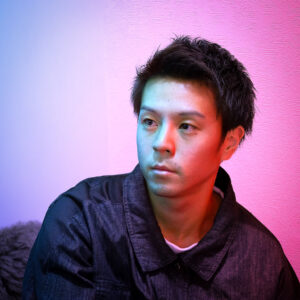
Haruka’s unique style modernizes traditional Japanese motifs.
Her dragons, samurai, and other dynamic pieces receive high praise from international clients for her detailed consultation on layout, color, and symbolism.
Fluent in English, she’s a great choice for first-time visitors.
Why Japanese Tattoos Are So Popular Among Foreigners
1. Japanese Aesthetics as Art
Japanese tattoos are valued not just as decoration, but as stories on skin.
Motifs like dragons, samurai, sakura, and Mount Fuji reflect Japan’s views on nature, life, and spirituality.
Globally, “Japanese Tattoo” is now a genre—admired for its balance of stillness and movement, harmony with nature, and brushstroke-inspired linework that sets it apart from other tattoo cultures.
The traditional Irezumi technique—passed down since the Edo period—is not just fashion but a fusion of beauty and philosophy.
Full-back pieces and flowing designs that link waves, dragons, and flowers are seen as “art on the human body.”
Their detailed shading and gradation make Japanese Traditional Tattoos admired worldwide, often described as “living paintings.”
2. Tattoos as Travel Memories
As more people around the world seek to “capture travel experiences in lasting form,”
tattoos commemorating trips to Japan have surged in popularity.
During cherry blossom season (March–April) or summer festivals, Tokyo studios see waves of foreign visitors.
Common requests include:
- A small piece inspired by traditional Irezumi.
- A modernized version of classic Japanese patterns.
This fusion of classic and contemporary continues to evolve into new global styles.
3. The Exceptional Skill of Japanese Artists
Japanese tattoo artists are globally recognized for precision linework, subtle color gradients, and exquisite composition.
Visitors often come seeking techniques that are difficult to replicate abroad, leading to the phrase “Made in Japan Tattoo.”
The motion of the needle and layering of color in traditional Irezumi require years of training.
Each piece carries a personal story or prayer, elevating Japanese tattooing into a true cultural art form.
Conclusion: Keep Japan in Your Heart—Forever
Japanese tattoos go beyond fashion.
They are expressions of love for Japan, memories of travel, and personal identity.
- A dragon for courage.
- Sakura for beauty.
- Kanji for belief.
- Mount Fuji for serenity.
- Every motif can tell your story.
Tattoo Studio KAGEROU operates three studios in Tokyo and one in Yokohama, all with English-speaking artists.
Walk-ins are welcome, making it ideal for those who wish to get a tattoo as a keepsake or the final memory of their journey in Japan.


